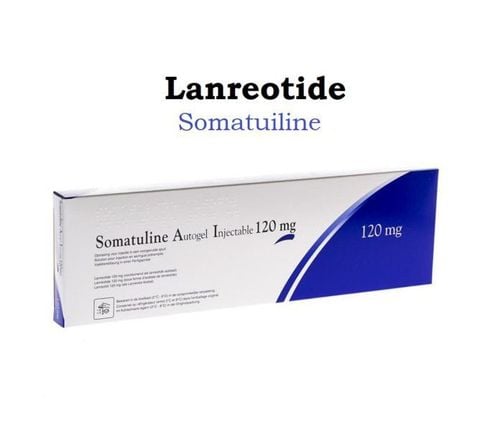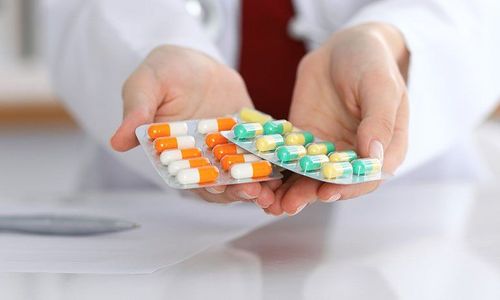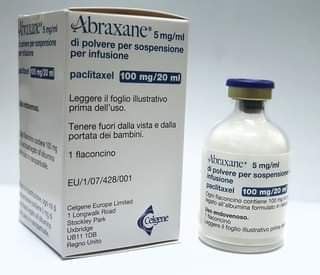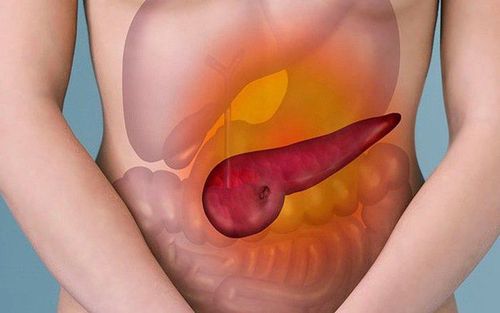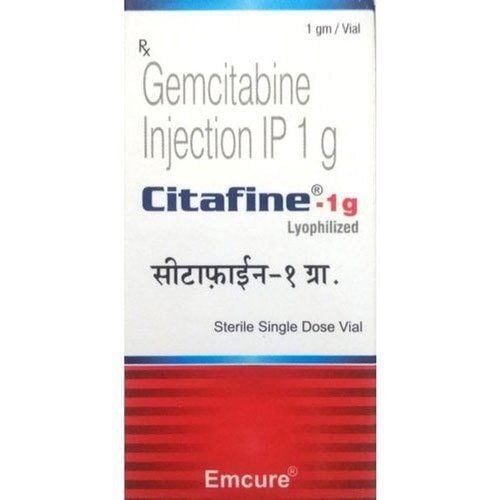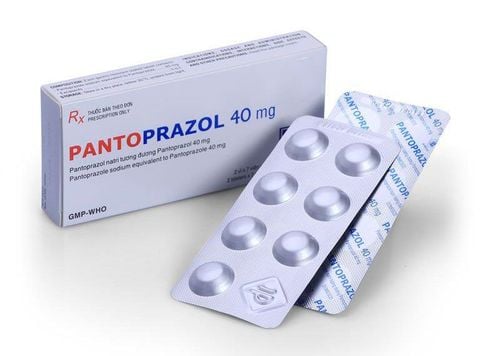This is an automatically translated article.
Acute pancreatitis is a common medical emergency with acute abdominal pain. Epigastric abdominal pain, often sudden onset, and constant, severe pain, worse when walking, lying on the back and relieved when sitting forward.1. What is acute pancreatitis?
The pancreas is an organ located in the abdomen (popularly known as the cane leaf), but it has an important exocrine role, it secretes some enzymes to help digest sugars, proteins and fats from food. ; In terms of endocrine, it secretes the hormones insulin and glucagon, which play an important role in metabolism and blood sugar regulation of the body.Acute pancreatitis is an acute inflammation of the pancreas resulting in damage to the follicular cells due to destruction of pancreatic enzymes, ranging from mild to severe and can lead to death. In Western countries, about 20% of patients with acute pancreatitis have a severe progression, and of the severe cases, 10-30% result in death despite aggressive treatment. In Vietnam, acute pancreatitis in recent years also tends to increase, in terms of pathology, there are two types of edematous pancreatitis and hemorrhagic necrotizing inflammation.
2. Causes and risk factors for acute pancreatitis
Acute pancreatitis is caused by many causes, the most common of which are: Gallbladder disease caused by stones or roundworms: 40-50%. Alcohol accounts for 20-30%.Uncommon causes of acute pancreatitis:
Abdominal trauma from outside or from gastroduodenal surgery, from procedures such as endoscopic retrograde cholangiopancreatography (ERCP). Diseases that damage small blood vessels such as diabetes, lupus erythematosus. Diseases with hyperlipidemia such as nephrotic syndrome or a group of disorders of blood lipid metabolism. Metabolic disorders: hypercalcemia such as hyperparathyroidism. Viral infections (mumps virus, CMV, EBV). Drugs: Many medications can irritate the pancreas. Usually, the inflammation goes away when the medication is stopped. Medicines such as angiotensin-converting enzyme inhibitors, azathioprine, furosemide, pentamidine, thiazides, etc. Due to allergies. Risk factors:
Over 70 years old Obesity (BMI >30) Drinking 2 or more drinks a day Smoking Having a family history of pancreatitis

Sử dụng rượu và thuốc lá là yếu tố nguy cơ gây viêm tụy cấp
3. Diagnosis of acute pancreatitis
3.1. Clinical symptoms Abdominal pain: is a common symptom (95% of patients with acute pancreatitis), depending on the cause, the nature of abdominal pain manifests differently (usually without history, clear cause):Inflammation Acute pancreatitis due to stones, typical pain is sudden epigastric pain like stabbing, pain spreading to the back. Acute pancreatitis due to metabolic causes, alcohol pain nature is usually not sudden and not intense localized as in the case of stones. Vomiting and nausea occur in 85% of patients with acute pancreatitis, however, when the patient vomits, the abdominal pain is still not relieved.
Clinical examination:
Body as a whole: up to 40% of patients present with tachycardia, hypotension which is the result of reduced intravascular volume due to vasodilation, vasodilation and bleeding. Approximately 60% of patients with acute pancreatitis present with mild fever, and high fever may be one of the hallmarks of cholangitis or necrotizing pancreatitis. Abdominal distension, pain. The sound of stomach rumbling usually decreases or disappears. Other signs: pleural effusion is common on the left side, jaundice, purple-black patches on the back, flanks or around the umbilicus due to pancreatic bleeding into the retroperitoneal space. 3.2. Laboratory tests Blood amylase or lipase: an increase of > 3 times is diagnostic (amylase returns to normal before lipase).
Blood count: white blood cell count increased, hematocrit increased, inflammatory factors interleukin-6 increased, CRP (C-reactive protein) increased on day 2 after acute pancreatitis.
Blood chemistry: ALT, bilirubin increased in acute pancreatitis due to gallstones, LDH increased.
Coagulopathy seen in critically ill patients.
Unprepared abdominal imaging: excludes other surgical emergencies such as perforation of a hollow viscera, other detectable signs such as pleural effusion, pancreatic stones.
Ultrasound is a good means of diagnosing acute pancreatitis, the extent of pancreatitis, as well as excluding other causes of abdominal pain such as acute gallstone pancreatitis.
Computed tomography (CT) or magnetic resonance imaging (MRI) has a higher value in diagnosis, overcoming the weakness of ultrasound, and allows a more detailed assessment of pancreatic lesions as well as complications. Symptoms of acute pancreatitis include assessment of pancreatic margins, parenchymal damage, extent of necrosis, and peripancreatic fluid.
ERCP (retrograde cholangiopancreatography) has no role in the diagnosis of acute pancreatitis, but it does play a role in the differential diagnosis of acute pancreatitis due to pancreas divisum or myopathy of Oddi, and emergency treatment of acute pancreatitis caused by stones and worms.
Endoscopic ultrasonography (EUS) is sensitive in detecting acute gallstone pancreatitis. Very little applied in the acute phase.
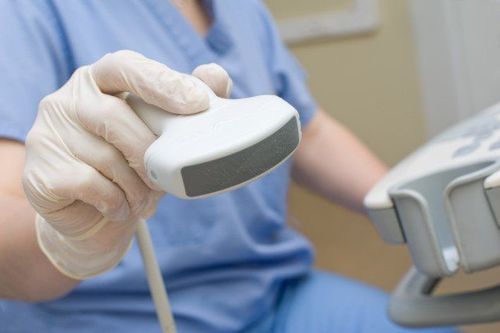
Siêu âm là phương tiện tốt để chẩn đoán viêm tụy cấp, mức độ viêm tụy
4. Treatment of acute pancreatitis
Fasting: the patient does not eat or drink until the pain subsides and the stomach boils again.Insert a duodenal catheter, aspirate fluid, save the catheter until the patient stops vomiting, reduces abdominal distention.
Care to closely monitor vital signs, oxygen saturation, if there are signs of low urine, hemodynamic disorders, decreased blood oxygen saturation, switch to intensive care unit.
Intravenous nutrition: the patient is given intravenous infusion to ensure adequate water, electrolytes and energy (salt solutions, sugar, amino acids, ...). The rate of infusion depends on the patient's condition, if the patient shows signs of hypotension, the infusion rate should be fast until hemodynamic stability is ensured, maintaining the infusion rate of 250-500ml/hour. Insertion of a duodenal catheter that allows food to enter the small intestine produces results comparable to that of parenteral nutrition.
Pain relief: intravenous pain relievers are used in steps from paracetamol for mild and moderate pain, and morphine can be used in cases where common pain relievers do not help.
Control metabolic disorders: tight control of blood sugar helps to early improve clinical symptoms, as well as limit complications of acute pancreatitis, hypocalcemia is one of the factors that aggravate the disease, but must be compensated for. Slow calcium, increased triglycerides can be a consequence or cause of acute pancreatitis, so re-measurement and adjustment when acute pancreatitis is stable, in case of too high triglycerides, plasma filtration can be performed.
Antibiotics: in case of mild acute pancreatitis, there is no indication to use antibiotics, but in severe cases of acute pancreatitis, especially in case of acute necrotizing pancreatitis, there is a risk of infection of the lungs and urinary tract. In determining antibiotics, antibiotics should be chosen with good penetration into the pancreas such as metronidazole, quinolones, 3rd generation cephalosporins, imipenem.
Drugs: reduce gastric acid secretion.
CT, MRI or EUS determine the cause of gallstones, complications at the delivery site can do ERCP to solve the cause of emergency pancreatitis.
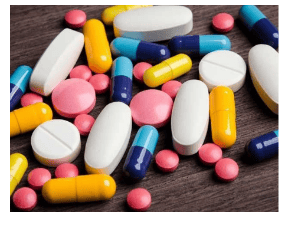
Trong các ca viêm tụy cấp nặng đặc biệt là trường hợp viêm tụy cấp hoại tử có nguy cơ nhiễm khuẩn phổi, đường niệu thì có chỉ định kháng sinh
5. How to prevent acute pancreatitis?
Acute pancreatitis is usually caused by gallstones or drinking too much alcohol. So a healthy lifestyle can reduce the chances of developing this condition.Gallstones : The most effective way to prevent gallstones is to eat a lot of vegetables every day. Eat more wholemeal bread, oats and brown rice, reduce fat - this helps lower cholesterol in your body. Being overweight also increases your chances of developing gallstones. Maintain a healthy weight by eating a balanced diet and exercising regularly to reduce your risk of developing this condition. Alcohol: reduce alcohol intake, this helps prevent your pancreas from being damaged. Do not drink more than 14 units a week, spread over 3 or more days. One unit of alcohol is about half a liter of normal strength or very strong 25ml. A small glass of wine (125ml) or alcopop is 1.5 units. If you have acute pancreatitis from drinking too much alcohol, you should avoid it completely. Don't smoke Periodic health check-ups help detect diseases early, so that you can have a treatment plan for optimal results. Currently, Vinmec International General Hospital has general health checkup packages suitable for each age, gender and individual needs of customers with a reasonable price policy.
The patient's examination results will be returned to the home. After receiving the results of the general health examination, if you detect diseases that require intensive examination and treatment, you can use services from other specialties at the Hospital with quality treatment and services. outstanding customer service.
Please dial HOTLINE for more information or register for an appointment HERE. Download MyVinmec app to make appointments faster and to manage your bookings easily.




